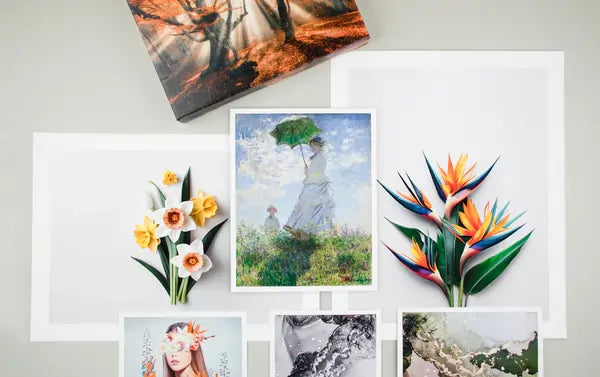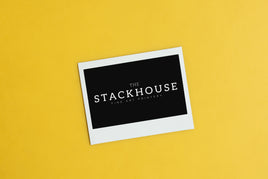Choosing how many print sizes to offer can significantly shape your sales strategy and customer experience. While giclée printing gives you flexibility to create artwork in almost any format, limiting your size options can simplify production and keep your brand cohesive. This guide outlines how to balance variety with simplicity when deciding what print sizes to offer.
Why Size Selection Matters
Offering too many size options can overwhelm buyers and complicate your workflow. Streamlining your size offerings helps customers make decisions faster and ensures consistency across your product line. On the other hand, offering a few variations—such as small, medium, and large—can give collectors choices while keeping your operations manageable.
Remember, handcrafted and limited-edition art already carries uniqueness and exclusivity. The focus should be on quality and presentation, not endless variety.
Pros of Limiting Size Options
- Easy Inventory Management: Fewer SKUs mean less storage and organization hassle.
- Consistent Products: Uniform sizes look cohesive in portfolios, online stores, or exhibitions.
- Streamlined Production: Simplified file prep and consistent paper use save time.
- Cost Efficiency: Ordering in bulk or standardizing packaging lowers overall expenses.
If you think about purchasing a poster or original artwork, the artist typically offers one size. In those cases, the focus is the artwork itself, not the format. You can use that same principle when creating your product lineup: offer fewer, stronger options that reinforce your style and professionalism.
When building out a product range, we recommend offering no more than four sizes per piece. This gives customers choice without overwhelming them. If a customer needs a specific format, they will likely ask about it—and you can decide whether a custom size is feasible.
Best Practices for Artists
Studying what sells at art fairs, galleries, and online can help you determine which sizes resonate most with buyers. Offering a limited number of popular formats creates a cleaner display and simplifies pricing tiers. As you gather more sales data, you can expand or refine your selection.
Tips for Selecting Your Sizes
- Start small: Offer one or two sizes—such as a mini and a medium print—to gauge interest.
- Know your audience: Smaller prints work well for casual buyers or event shoppers, while larger formats appeal to collectors and decorators.
- Align with trends: Visit art markets or browse online galleries to see what sizes are currently popular.
- Consider framing: Stick to standard frame sizes to make it easier for buyers to display your prints.
Framing and Cropping Considerations
When preparing your files, keep your image’s natural aspect ratio intact whenever possible. Cropping to fit nonstandard sizes can distort composition or remove important details. Matching your print sizes to the artwork’s original ratio preserves balance and prevents unintentional cropping during production.
Using standard print sizes ensures that buyers can easily find ready-made frames. This convenience increases the likelihood that your prints will be displayed quickly—and that matters for customer satisfaction and repeat purchases.
Example Approach
If your artwork was originally created at 12x16, offer prints in 6x8, 9x12, and 12x16. These sizes maintain the 3:4 ratio while giving buyers options for space and budget.
Balancing Quality and Options
While it’s tempting to provide every possible variation, quality should always outweigh quantity. Each new size requires additional file prep, testing, and inventory management. Focusing on a few curated sizes keeps your work consistent and helps maintain a higher perceived value.
If you plan to sell in-person or online, test your top-selling designs in two or three formats. Then use performance data—like sales numbers and customer feedback—to refine your offerings for future collections.
Next Steps: Prepare for Printing
Before uploading your files, make sure they are properly sized and meet printing standards. Our guide to mastering image resolution explains how to ensure your files are sharp and ready for print. For help deciding on borders, see our Sizing and Borders Guide.
If you are unsure about your file’s print capabilities, our team is happy to help. Contact us and we can review your artwork to confirm optimal sizing and formatting before production.
Final Thoughts
Less can truly be more when it comes to print sizes. A limited range simplifies your workflow, makes purchasing easier for your customers, and keeps your product catalog looking clean and consistent. By curating a small set of well-chosen sizes, you can focus on delivering exceptional quality and customer experience—two things that always stand out in the art world.
Ready to print your next collection? Explore Giclée Fine Art Prints for professional reproductions, or order a Free Media Sample Set to preview paper options before finalizing your print sizes.









